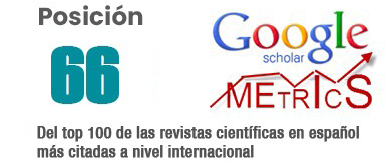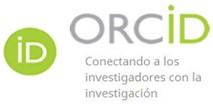Organized crime and dangerous crime: results for punishment
DOI:
https://doi.org/10.62452/h2t7r167Keywords:
Delinquency, crime, abstract danger, concrete dangerAbstract
The development of criminality, characterized by the formation of structured groups for profit, has led Ecuador to adapt its legal framework. The Organic Comprehensive Criminal Code, in force since 2014, criminalizes Organized Crime, aligning it with international standards established in the United Nations Convention against Transnational Organized Crime and other treaties. These instruments provide a solid foundation for the prosecution of such crimes globally. In Ecuador, we now have a specific description aimed at prosecuting organized crime offenses, to protect public security and peace, considering that the mere creation of a criminal structure endangers collective tranquility, as a criminal organization will directly harm society, infringing upon one or more legally protected rights. Specifically, Article 369 of the Organic Comprehensive Criminal Code defines the crime of organized crime, punishing those who commit this offense with prison sentences of up to 10 years. However, the complexity of this criminal offense sometimes leads to impunity. The methodology used is qualitative and interpretative bibliographic research, focused on the analysis of relevant documents on the subject.
Downloads
References
Aguilar, M. A. (2007). Delitos de peligro e imputación objetiva. Revista de Colaboraciones Jurídicas de la UNAM, 23(1). https://revistas-colaboracion.juridicas.unam.mx/index.php/judicatura/article/viewFile/32178/29171
Barbero, S. M. (1971). Anuario de Derecho Penal y Ciencias Penales. Ministerio de Justicia de España.
Beade, G. A. (2008). El concepto de riesgo y los delitos anticipatorios: Una aproximación acerca de una distinción necesaria. Nómadas. Revista Crítica de Ciencias Sociales y Jurídicas, 17(1). https://www.redalyc.org/pdf/181/18101707.pdf
Di Pietro, N. (2015). Teoría del delito y de la pena. Independently published.
Donna, A. (2015). Derecho penal: Parte especial (Tomo II). Rubinzal – Culzoni.
Ecuador. Asamblea Nacional. (2014). Código orgánico integral penal. Registro Oficial 180. https://www.defensa.gob.ec/wp-content/uploads/downloads/2021/03/COIP_act_feb-2021.pdf
García Falconí, R. J. (2014). Código orgánico integral penal comentado (1. ed.). ARA Editores E.I.R.L.
Mir Puig, S. (2016). Derecho penal: Parte general (10.ª ed.). Reppertor.
Observatorio Ecuatoriano de Crimen Organizado. (2020). Resumen de análisis de registros judiciales por delincuencia organizada en Ecuador. https://oeco.padf.org/wp-content/uploads/2023/03/2-Resumen-de-analisis-de-registros-judiciales-por-delincuencia-organizada-en-Ecuador.pdf
Pino Andrade, E. E., Rojas Cárdenas, J. A., Sailema Armino, J. G., & Andrade Santamaría, D. R. (2020). El sustento dogmático de la autoría mediata en el Código Orgánico Integral Penal Ecuatoriano. Revista Uniandes Episteme, 7, 695–706. https://revista.uniandes.edu.ec/ojs/index.php/EPISTEME/article/view/2111
Teijón A, M. (2023). Los delitos de peligro en el derecho penal. Revista Electrónica de Ciencia Penal y Criminología, 45. https://dialnet.unirioja.es/servlet/articulo?codigo=9249718&orden=0&info=link
Downloads
Published
Issue
Section
License
Copyright (c) 2025 Paul Fernando Zambrano-Coronel, Juan Sebastián Crespo-Urgilés, Diego Fabricio Coello-Pinos (Autor/a)

This work is licensed under a Creative Commons Attribution-NonCommercial-ShareAlike 4.0 International License.
Authors who publish in Revista Metropolitana de Ciencias Aplicadas (REMCA), agree to the following terms:
1. Copyright
Authors retain unrestricted copyright to their work. Authors grant the journal the right of first publication. To this end, they assign the journal non-exclusive exploitation rights (reproduction, distribution, public communication, and transformation). Authors may enter into additional agreements for the non-exclusive distribution of the version of the work published in the journal, provided that acknowledgment of its initial publication in this journal is given.
© The authors.
2. License
The articles are published in the journal under the Creative Commons Attribution-NonCommercial-ShareAlike 4.0 International License (CC BY-NC-SA 4.0). The terms can be found at: https://creativecommons.org/licenses/by-nc-sa/4.0/deed.en
This license allows:
- Sharing: Copying and redistributing the material in any medium or format.
- Adapting: Remixing, transforming, and building upon the material.
Under the following terms:
- Attribution: You must give appropriate credit, provide a link to the license, and indicate if any changes were made. You may do this in any reasonable manner, but not in any way that suggests the licensor endorses or sponsors your use.
- NonCommercial: You may not use the material for commercial purposes.
- ShareAlike: If you remix, transform, or build upon the material, you must distribute your creation under the same license as the original work.
There are no additional restrictions. You may not apply legal terms or technological measures that legally restrict others from doing anything the license permits.




